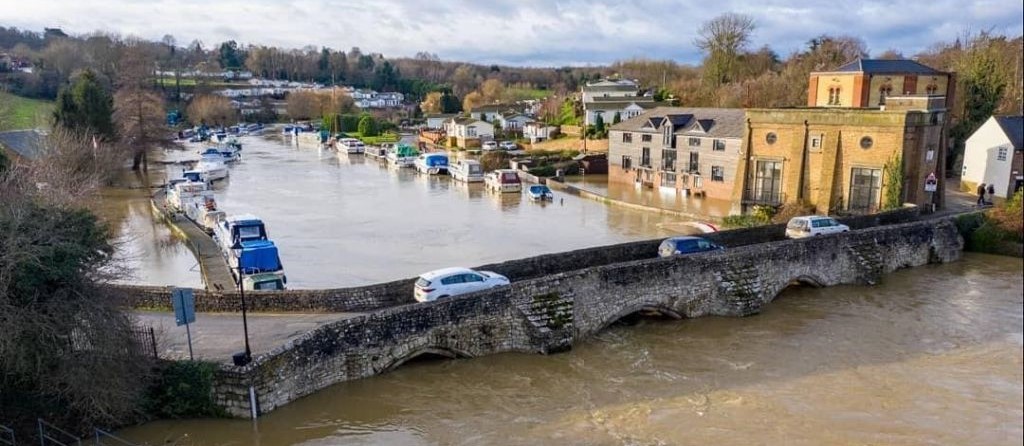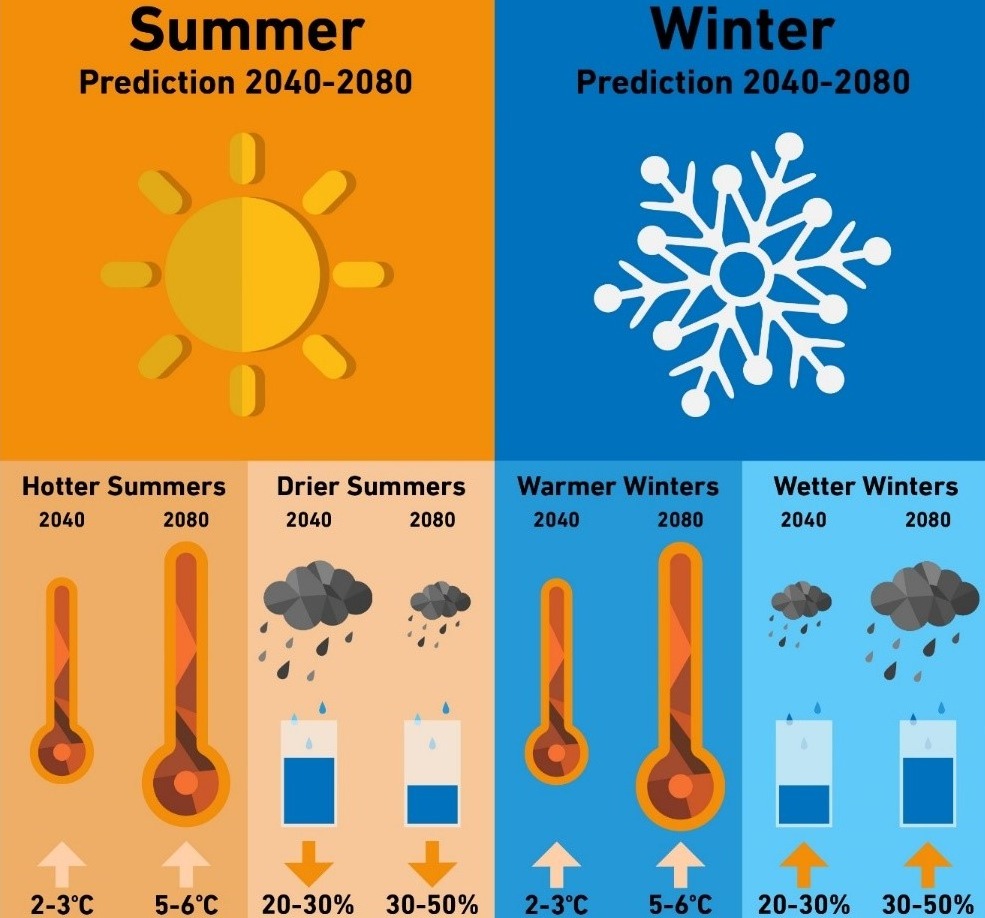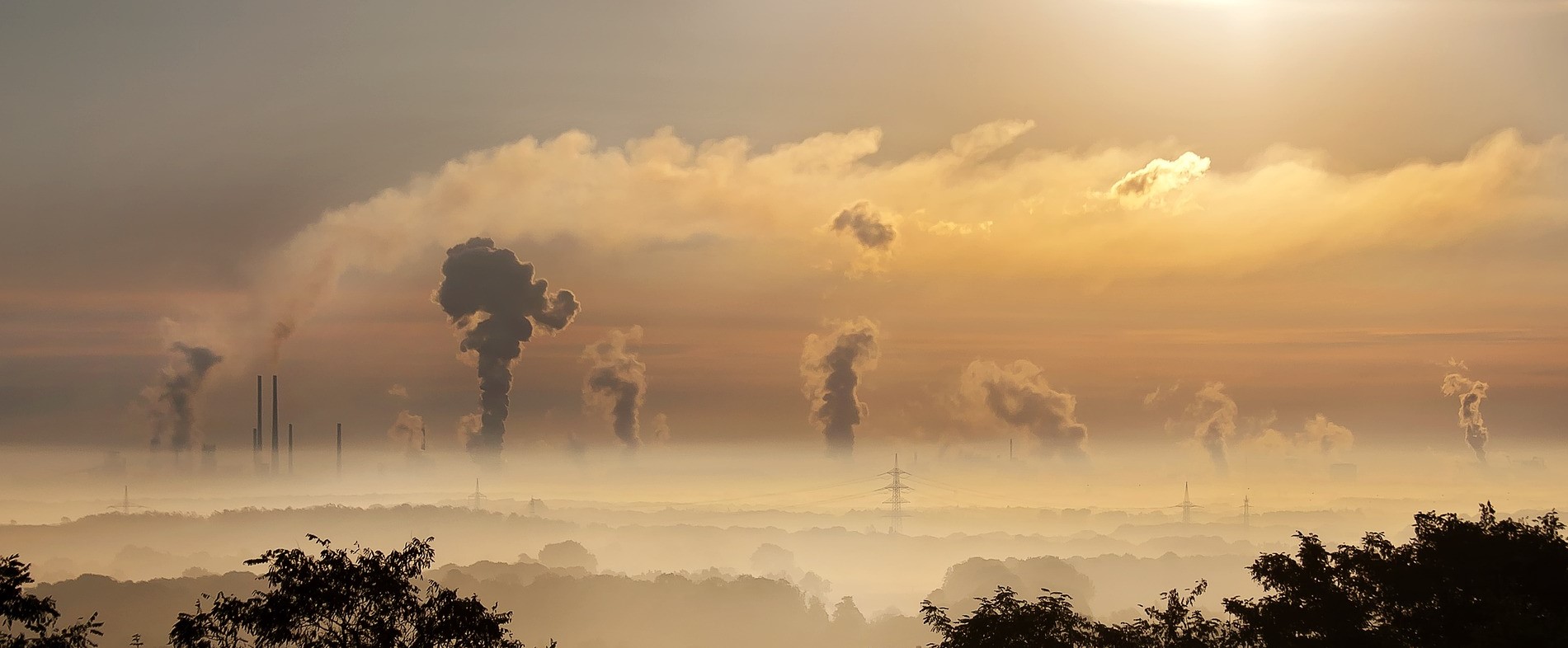Understanding Climate Change
What is Climate Change?
Climate is the long-term average weather pattern recorded in a region over many years. Climate change is a shift in those average conditions.
Since the Industrial Revolution human activity, including fossil fuels (coal, oil and gas) and deforestation, has led to a huge increase in greenhouse gases in our atmosphere; mostly carbon dioxide (CO2). Greenhouse gases, such as CO2, methane and nitrous oxide, are naturally occurring and support life on earth by trapping the sun's heat however the extra greenhouse gases in the earth’s atmosphere trap more of the sun’s heat, know as the Greenhouse Effect, leading to a rise in global average temperatures.
The world is now approximately 1.1°C warmer than it was in the 19th Century, and the amount of CO2 in the atmosphere has risen by 50%. Scientists predict that this trend is set to continue at pace without considerable reductions in carbon emissions.
What are the impacts of climate change?
The UK’s climate is changing. Even with very ambitious actions to reduce greenhouse gas emissions globally, further climate change and impacts for the UK are inevitable. Temperatures in the UK exceeded 40°C for the first time on record in 2022 and extreme weather events are likely to become more frequent. Stabilising global temperature rise at 1.5 to 2°C above pre-industrial levels would prevent some of the most extreme impacts, but current global pledges to reduce emissions are not enough and global temperature is likely to increase 3°C or more.

Climate change can affect our climate system in lots of different ways:
- Changes in the hydrological cycle
- Warmer land and air
- Warming oceans
- Melting sea ice and glaciers
- Rising sea levels
- Ocean acidification
- Global greening
- Changes in ocean currents
- More extreme weather
Our climate system is finely balanced and small changes can have significant consequences. Some of the impacts from these changes to our climate system include:
- Risk to water supplies
- Conflict and climate migrants
- Localised flooding
- Flooding of coastal regions
- Damage to marine ecosystems
- Fisheries failing
- Loss of biodiversity
- Change in seasonality
- Heat stress
- Habitable region of pests expands
- Forest mortality and increased risk of fires
- Damage to infrastructure
- Food insecurity
What will climate change look like in my local area?
The South East of England is predicted to experience heavier, more intense periods of rain and hotter drier summers due to the effects of climate change. This brings a serious risk of more frequent flooding and overheating in the summer.
The Climate Change Risk and Impact Assessment for Kent and Medway (CCRIA) provides a detailed assessment of the county’s current and future risks, opportunities and impacts of climate change and prioritises these to identify the risks of most importance. It also provides recommendations for further action. The CCRIA has been informed by the most recent climate change projections for the UK. Climate projections are informed predictions of the future climate based on climate models. These models identify the following potential changes for Kent:

The Met Office and the BBC have created a free resource, that shows you what the impacts of climate change will be like near you. Enter your postcode to reveal climate projections in your area.
Key climate change terms
Adaptation- actions that help cope with the effects of climate change. For example, construction of barriers to protect against rising sea levels or conversion to crops capable of surviving high temperatures and drought.
Biodiversity- the variety of plant and animal life in an area and how they interact within habitats and ecosystems, like lakes and native forests.
Carbon dioxide (CO2)- CO2 is a gas in the earth's atmosphere. It occurs naturally and is also a by-product of human activities such as burning fossil fuels. It is the principal greenhouse gas produced by human activity.
Carbon footprint- a measurement of carbon emissions linked to a particular activity or product. The footprint includes emissions at all stages of making and using a product or carrying out an activity. The lower the carbon footprint, the less that a product or activity contributes to climate change.
Carbon neutral- if the amount of greenhouse gas released into the air equals the amount removed from the air. For example, growing biomass takes CO2 out of the atmosphere, while burning it releases the gas again. The process would be carbon neutral if the amount taken out and the amount released were identical. A company or country can also achieve carbon neutrality by means of carbon offsetting.
Carbon offsetting- a way of compensating for emissions of CO2 by participating in, or funding, efforts to take CO2 out of the atmosphere. Offsetting often involves paying an external party to save emissions equivalent to those produced by your activity.
Carbon sequestration- this involves removing carbon emissions from the air and storing it securely for a long period. This can happen naturally, as, for example, growing trees and plants turns CO2 into biomass (wood, leaves, etc). It can also refer to the capture and storage of CO2 produced by industry.
Carbon sinks- a natural or artificial reservoir like plants, peat bogs or oceans that absorb and store greenhouse gases, like CO2. This process of carbon sinks removes greenhouse gases from the air and keeps our global temperatures from rising too high.
Climate- the average weather conditions in a region over a long time; usually 30 years or more. The big difference between climate and weather is the length of time involved. Weather can change from minute-to-minute, day-to-day, but climate is the average of weather over a longer time in a specific area.
Decarbonisation- the process of removing or reducing all man-made carbon emissions, with the goal to eliminate them altogether, thus achieving net-zero emissions.
Deforestation- the permanent removal of standing forests that can lead to significant levels of carbon dioxide emissions.
Fossil fuels- fuels, such as coal, gas, peat and oil, that are formed in the ground over many thousands, or millions of years from dead plants and animals and are burned for energy.
Global warming- the steady rise in global average temperature in recent decades, which experts believe is largely caused by man-made greenhouse gas emissions.
Greenhouse gases (GHGs)- gases that trap heat from the earth’s surface and cause warming in the lower atmosphere, as well as slow down loss of energy from earth. The major greenhouse gases that contribute to climate change are carbon dioxide, methane and nitrous oxide.
Hydrological Cycle- also known as the water cycle, the journey water takes as it moves from the land to the sky and back again. It follows a cycle of evaporation, condensation and precipitation.
IPCC- The Intergovernmental Panel on Climate Change is a scientific body established by the United Nations Environment Programme and the World Meteorological Organization. It reviews and assesses the most recent scientific, technical and socio-economic work relevant to climate change, but does not carry out its own research. You can find more information on the IPCC at IPCC — Intergovernmental Panel on Climate Change
Mitigation- action that will reduce man-made climate change. This includes action to reduce greenhouse gas emissions or absorb greenhouse gases in the atmosphere.
Net Zero- achieving a balance between greenhouse gas emissions produced by human activity and greenhouse gas emissions taken out of the atmosphere.
Paris Agreement- this legally binding climate change agreement was adopted in Paris, France, in December 2015. It sets out a global framework to avoid dangerous climate change by limiting global warming to 1.5°C. It also aims to strengthen different countries’ abilities to deal with the impacts of climate change and support them in their efforts. Find out more about the Paris agreement at The Paris Agreement | UNFCCC
Renewable energy- energy created from sources that can be replenished in a short period of time. The five renewable energy sources used most often are: biomass (such as wood and biogas), the movement of water, geothermal (heat from within the earth), wind, and solar.
Retrofitting- in relation to buildings, energy retrofitting are any improvements made to enhance the energy efficiency of an existing building. This usually includes upgrading the roof and wall insulation to help retain heat and installing renewable energy systems like solar panels and heat pumps.
Scope 1- emissions from sources that an organisation owns or controls directly. For example, from burning fuel in a organisation's fleet of vehicles, if they are not electrically-powered.
Scope 2- emissions that a company creates indirectly through the energy it purchases and uses.
Scope 3- encompasses emissions that are not produced by the company itself, and not the result of activities from assets owned or controlled by them, but by those that it’s indirectly responsible for across its value chain. An example of this is when a business buys, uses and disposes of products from suppliers. Scope 3 emissions include all sources not within the scope 1 and 2 boundaries.
Sustainable Development Goals (SDGs)- these are goals (17 in total) developed by the United Nations to address the urgent environmental, political and economic challenges facing our planet. The purpose of the goals is to end poverty, while protecting our world and building economic growth. You can find out more about to SDGs at THE 17 GOALS | Sustainable Development (un.org)
UNFCCC (United Nations Framework Convention on Climate Change)- this is an international treaty to address climate change. It came into force in 1994 and has almost universal membership (197 members). The Paris Agreement is made under this treaty. You can find out more about the UNFCCC at www.unfccc.int
Weather- the short term, day-to-day, or even moment-to-moment, changes in temperature, humidity, precipitation, etc. It is not the same as climate, which is the average weather over a much longer period.
